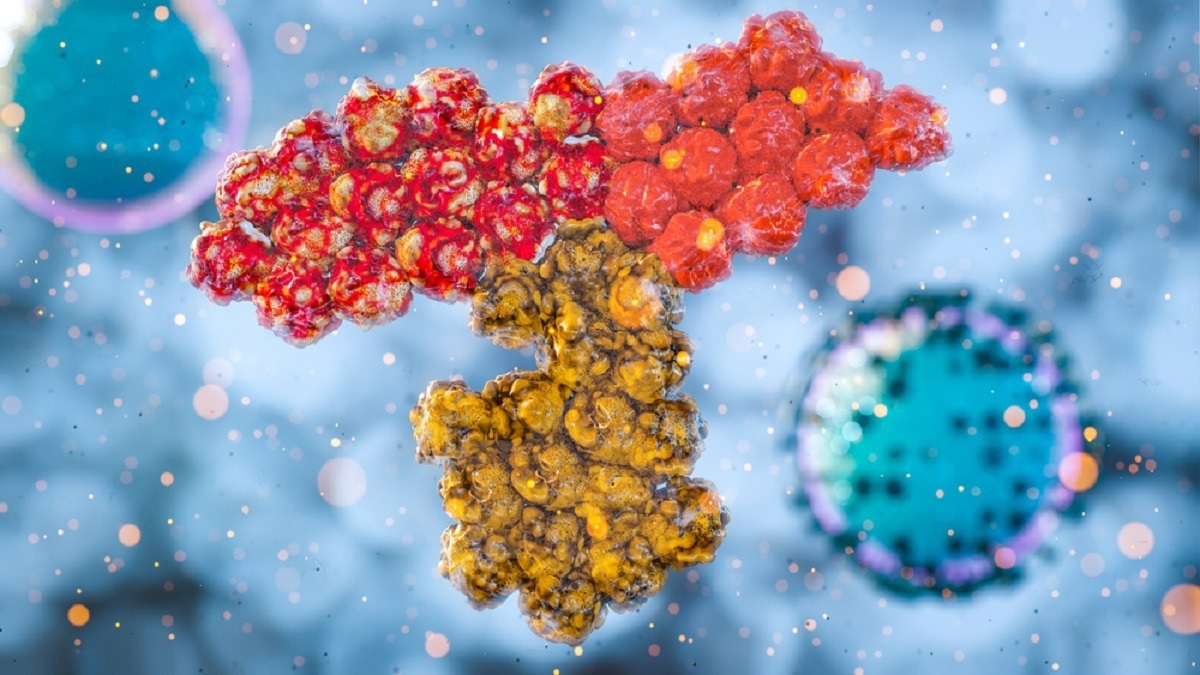A recent study published in Nature Microbiology identified a monoclonal antibody (mAb) neutralizing severe acute respiratory syndrome coronavirus 2 (SARS-CoV-2) Omicron variants.

Background
Several SARS-CoV-2 variants of concern (VOCs) exhibit higher transmissibility and resistance to immunity. The latest VOC, Omicron, carries 37 mutations in its spike protein, most of which lie within the receptor-binding domain (RBD), the target for neutralizing antibodies (nAbs). The Omicron variant is also resistant to many mAbs and persists in circulation as different sub-variants (BA.1.1, BA.2, BA.3, BA.4, and BA.5), reflecting the unprecedented need for prophylactic and therapeutic interventions.
The study and findings
In the present study, researchers isolated and characterized P2G3, a mAb, from a convalescent vaccinated donor. First, the research team screened serum samples from a cohort of more than 100 donors for the presence of antibodies against spike. They focused on a convalescent subject who was fully vaccinated with Moderna’s mRNA-1273 vaccine; the individual had the highest antibody levels, with a broad range against several variants in a previous neutralization assay.
Six B-cell clones were prioritized for mAb synthesis by expressing light and heavy chains in ExpiCHO cells. P2G3 showed the highest binding affinity for the spike protein from ancestral SARS-CoV-2 and a panel of Alpha, Beta, Gamma, and Delta spike proteins. Cross competitive spike binding studies were performed using a panel of authorized mAbs such as REGN10933, REGN10987, AZD8895, AZD1061, S309/sotrovimab, and ADG-2 and mAbs previously studied by the research group.
This revealed a unique but overlapping binding epitope for P2G3 that S309 and AZD1061 also recognize. Besides, P5C3, a mAb previously described by the team, showed non-competitive binding with P2G3. In a subsequent angiotensin-converting enzyme 2 (ACE2)-spike surrogate neutralization assay, P5C3, and P2G3 exhibited broad and highly potent inhibition of binding (of VOC spike proteins) to ACE2. Also, the two mAbs were the most potent against the spikes from BA.1, BA.1.1, and BA.2 variants.
In pseudovirus neutralization assays, P2G3 potently neutralized pseudoviruses coated with ancestral, Alpha, Beta, Delta, or Omicron spike protein. Notably, P2G3 showed no loss of activity against BA.1 spike relative to other VOCs and was 42-fold more potent than AZD1061, ADG-2, REGN10933, AZD8895, and REGN10987 mAbs. The P5C3/P2G3 cocktail had marginal enhancement in neutralizing activity.
Next, in live virus cytopathic effect assays, the authors noted a potent neutralizing activity of P2G3 against the D614G strain and VOCs. In comparison, the neutralizing potency of P2G3 against BA.1 and BA.2 variants far exceeded that of currently authorized mAbs. Moreover, the P5C3/P2G3 cocktail had neutralization comparable to P2G3 alone.
Further, they tested P2G3 activity in antibody-dependent cellular phagocytosis (ADCP) and cytotoxicity (ADCC) assays. It exhibited strong and superior ADCC activity than other mAbs. Similarly, the ADCP activity (using ancestral spike) was potent for P2G3 and P5C3, but the latter showed a seven-fold higher potency than P2G3. In contrast, when Omicron spike protein was used, P2G3 was three-fold more potent than P5C3.
P2G3-dosed hamsters were challenged with ancestral SARS-CoV-2 two days after immunization. Lung tissue was assessed for infectious viral particles and RNA four days later. Infectious viral particles were not detected in the lungs of all P2G3-treated animals except for one hamster that received the lowest dose. Hamsters also showed a 4-log decrease in viral genomic RNA levels.
Next, the P2G3-mediated protection was tested in a cynomolgus macaque model. Two monkeys were intravenously administered with 10 mg/kg of P2G3 and challenged with 1 x 105 tissue culture infectious dose (TCID50) of SARS-CoV-2 Omicron BA.1 variant. P2G3-treated animals showed lower viral loads than controls, and active viral replication was at or below the detection limit. mAb-treated monkeys had stable levels of lymphocytes, whereas control monkeys had marked lymphocytopenia.
In a subsequent investigation, animals were challenged with the BA.1 variant as previously and administered 24 hours post-challenge with a high (5 + 5 mg/kg) or low (2.5 + 2.5mg/kg) dose of P5C3/P2G3 cocktail. Inhibition of active viral replication was noted in high and low-dosed animals. These investigations revealed that the cocktail was therapeutically efficacious in clearing infectious BA.1 particles and inhibiting viral replication.
Conclusion
Researchers identified and characterized P2G3 from a fully vaccinated donor who was previously infected. The mAb showed superior potency and breadth of neutralization against all VOCs, including BA.1 and BA.2 sub-variants. Binding assessments indicated that P2G3 is a class 3 mAb recognizing a unique RBD epitope. Moreover, cryo-electron microscopy showed that the mAb could bind to RBD in the spike protein's ‘up’ and ‘down’ conformations.
Additionally, P5C3 and P2G3 mAbs contain the LS substitution, M482L/N434S, in their crystallizable fragment (Fc) region, which increases the in vivo half-life that is highly desirable for prophylaxis. Using the two mAbs as a cocktail could be an excellent anti-SARS-CoV-2 intervention for prophylaxis and therapy against the existing VOCs and future VOCs, given the high breadth of its activity.
- Fenwick, C. et al. (2022) "Patient-derived monoclonal antibody neutralizes SARS-CoV-2 Omicron variants and confers full protection in monkeys", Nature Microbiology. doi: 10.1038/s41564-022-01198-6. https://www.nature.com/articles/s41564-022-01198-6
Posted in: Medical Science News | Medical Research News | Disease/Infection News
Tags: ACE2, ADCC, Angiotensin, Angiotensin-Converting Enzyme 2, Antibodies, Antibody, Assay, binding affinity, Cell, Coronavirus, Coronavirus Disease COVID-19, Cytotoxicity, Electron, Electron Microscopy, Enzyme, Genomic, immunity, Immunization, in vivo, Lungs, Microbiology, Microscopy, Monoclonal Antibody, Omicron, Phagocytosis, Prophylaxis, Protein, Pseudovirus, Receptor, Research, Respiratory, RNA, SARS, SARS-CoV-2, Severe Acute Respiratory, Severe Acute Respiratory Syndrome, Sotrovimab, Spike Protein, Syndrome, Tissue Culture, Vaccine, Virus

Written by
Tarun Sai Lomte
Tarun is a writer based in Hyderabad, India. He has a Master’s degree in Biotechnology from the University of Hyderabad and is enthusiastic about scientific research. He enjoys reading research papers and literature reviews and is passionate about writing.
Source: Read Full Article



